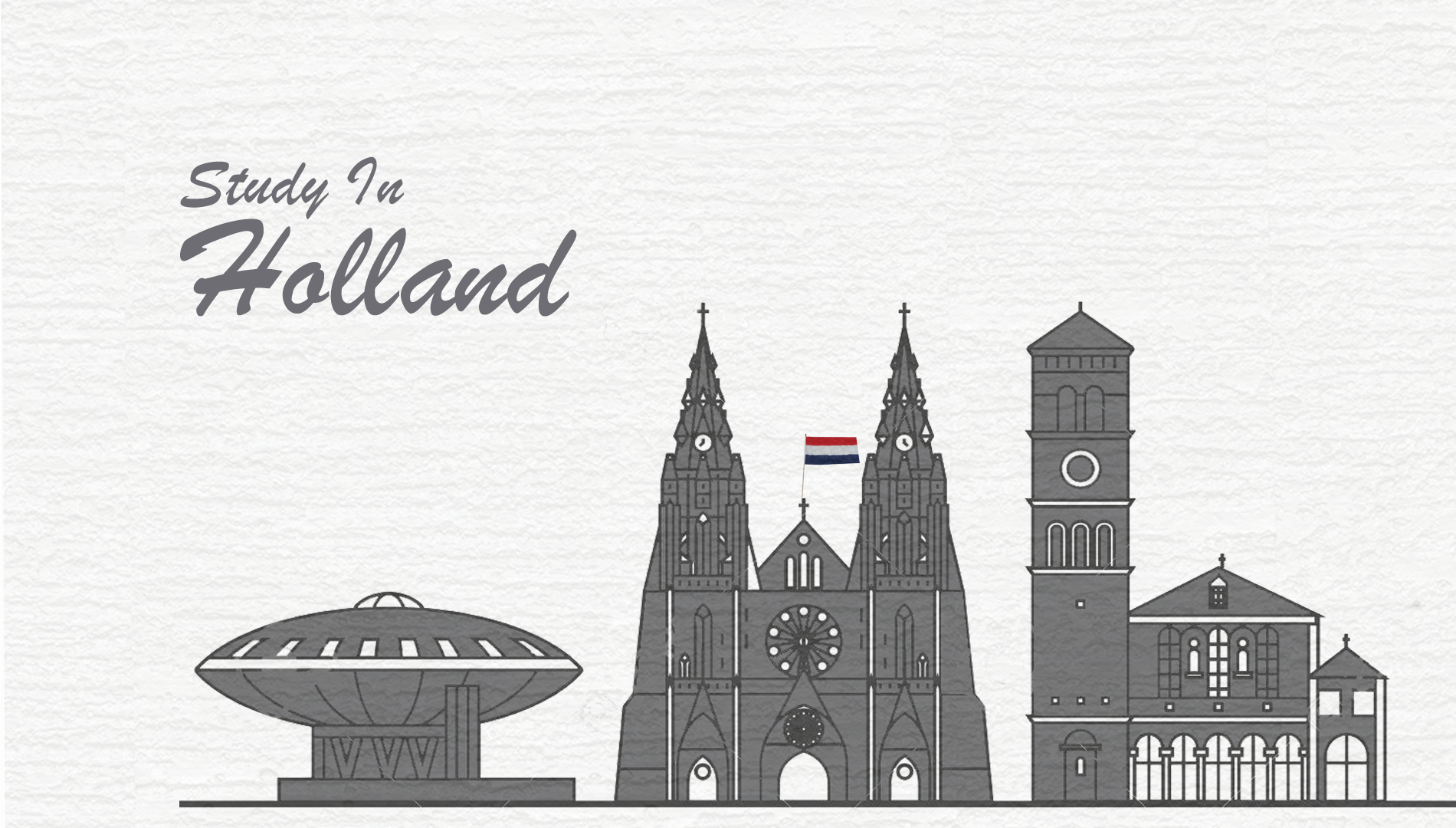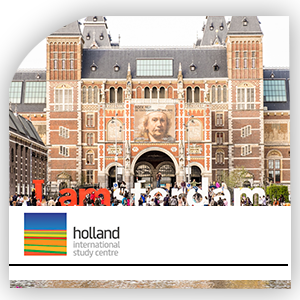Study in Holland
The history of Holland as a country begins with the story of how Holland actually became a country, because up to the 19th century Holland was just a river delta divided into various regions, most of which had their own governments. It was only on 29 March 1814 that the nation of the United Kingdom of the Netherlands was born, under the rule of the Orange-Nassau family.
- Holland has been a constitutional monarchy since 1814.
- King Willem-Alexander has been the Dutch head of state since 2013.
- Nijmegen and Maastricht are among Holland’s most ancient cities.
- Holland has a true love/hate relationship with water
41,000 square kilometres – home to more than 16 million people.
| Surface area | 41,528 square kilometres, one quarter of which lies below sea level |
| Longest distance north-south | 300 kilometres |
| Longest distance east-west | 200 kilometres |
| Lowest altitude | 6.76 metres below sea level (near Rotterdam) |
| Highest altitude | 323 metres (near Maastricht) |
| Climate | Moderate maritime climate |
The country is situated in the west of Europe and borders Germany to the east, Belgium to the south and the North Sea to the north and west.
Holland’s relatively small area of just over 41,000 square kilometres is home to more than 16 million people.
Holland is a constitutional monarchy with an open economy.
Key facts
| Official name | Kingdom of the Netherlands |
| Form of government | constitutional monarchy with a bicameral parliament |
| Head of state | the hereditary monarch (currently King Willem-Alexander) |
| Head of government | the prime minister (currently Mark Rutte) |
| Capital city | Amsterdam |
| Seat of government | The Hague |
For centuries, international trade has been a key element of the Dutch economic system. Because of its location in the delta through which several major European rivers connect to the North Sea, Holland was ideally situated to become a centre of trade and transport for all of western Europe.
The 17th century is known as the Golden Age of Dutch history, with Dutch ships carrying 90 % of all goods in Europe. Today, international trade is still the main driver of economic growth. Holland is the sixteenth largest economy in the world and one of the ten leading exporting nations.
Holland’s main trading partners are its neighbours Germany, Belgium, the UK and France.
Today, over 80 % of Dutch economic activity is service-based.
But Holland is also one of the three largest exporters of agricultural products in the world. One-fifth of all Dutch exports are food products and flowers.
In recent years, Dutch design has become famous worldwide. From fashion and architecture to music and new media, the design sector is filled with talent.
Most of the student life in Holland happens off-campus.
Although the buildings of a single university might be spread throughout a city and only some higher education institutions have campuses, they do have a real student culture.
Each institution has a network of associations that bring students together for academic activities, sports and recreation. All of these associations are run by students, and some of them are internationally oriented. Two of the larger international student associations are AIESEC and the Erasmus Student Network (ESN).
Many cities also have several separate student associations, not connected to any institution. And there are usually pubs, restaurants and other meeting places where many students hang out.
Generally speaking, the Dutch higher education community seeks to be part of society and is not isolated from it.
Leisure
There is plenty to see in Holland, whether you’re strolling through town, making a boat trip on the canals or lakes, lazing on the beach or walking in the woods and dunes.
Major international music stars regularly play at Dutch stadiums and smaller venues. Musicals and theatre are also very popular and with over 1,000 museums there is a lot to discover.
And don’t be surprised to see people dressed in orange and partying in the street on King’s Day or during international football championships.
Position in Europe
From Holland it is easy to explore the rest of Europe.
Once you have arrived in Holland, you will discover that many European capitals are within easy reach. Berlin, Brussels and Paris are just a few hours away by train, and a short flight from Amsterdam Airport Schiphol will take you to London, Madrid or Rome.
Dutch universities can be a starting point for study tours and exchanges in other European countries.


